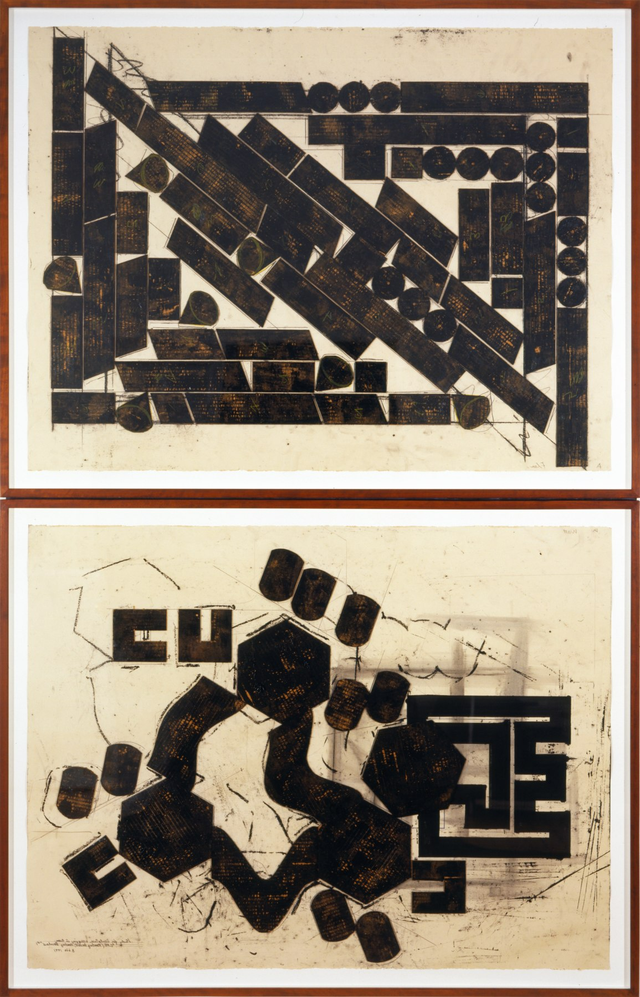Barry Le Va
Barry Le Va was an American artist known for his groundbreaking contributions to conceptual art and innovative approach to sculpture and installation. He emerged as one of the prominent figures in the late 1960s, contributing significantly to the realms of post-studio and process art.
Biography of Barry Le Va
Barry Le Va was born on December 28, 1941, in Long Beach, California.
From 1960 to 1963, Barry Le Va studied at California State University, Long Beach. He continued his education at the Los Angeles College of Art & Design.
Le Va's art journey began when he studied at the Otis Art Institute in Los Angeles, where he received a Master of Fine Arts in 1967. During this time, he was exposed to influential artistic movements such as Abstract Expressionism and Minimalism, which impacted his early artistic development. Le Va's interest in process, materiality, and the relationship between art and the viewer emerged during this period.
In the late 1960s, Le Va moved to New York City, where he became an active participant in the vibrant art scene of the time. He gained recognition for his innovative installations that combined various materials, including crushed glass, felt, and powdered metals. Le Va's installations were frequently defined by their ephemeral nature and capacity to transform exhibition spaces into dynamic, site-specific environments.
In 1968, he was awarded a Young Talent Grant from the Los Angeles County Museum of Art. His talent and artistic vision were recognized through solo exhibitions at esteemed institutions such as the Walker Art Center and the Minneapolis Institute of Art. Simultaneously, he participated in a group show, titled "Anti-Illusion: Procedure/Materials" at the Whitney Museum of American Art. This further solidified his place among the influential artists of his time.
From 1968 to 1970, Le Va worked as an instructor at the Minneapolis College of Art & Design. He taught advanced sculpture at Princeton University from 1973 to 1974. Starting in 1976, he taught graduate-level classes in sculpture at Yale University.
Le Va's exceptional contributions to the field were acknowledged with prestigious honors, including a Guggenheim Fellowship for Sculpture in 1974 and a National Endowment for the Arts Fellowship in 1976.
Barry Le Va's art style
Le Va experimented with different materials and techniques, often incorporating chance and randomness into his process. He explored the notion of entropy and the unpredictable nature of materials, allowing them to determine the outcome of his works. Le Va's installations were often accompanied by diagrams or written instructions, providing a framework for the viewer to engage with the artwork.
He embarked on a new artistic exploration, creating works that featured cleavers serially embedded in walls or floors. This distinctive approach demonstrated his inclination towards pushing boundaries and challenging traditional notions of art. In recent years, Le Va shifted his focus towards producing monumental abstract works and creating site-specific installations.
Famous works of the great artist
Barry Le Va's notable works from the 1960s stand out for their utilization of felt and other industrial materials. These works showcase rolls of felt meticulously cut into smaller pieces, resulting in scattered, uneven clippings dispersed throughout a gallery space. At first glance, the pieces may seem random, but in truth, Le Va carefully planned them beforehand. He employed diagrams to map out the precise locations and arrangements of the felt, ensuring a deliberate composition within the installation. This meticulous process highlights Le Va's thoughtful approach and reveals the underlying intention behind what initially appears to be a haphazard arrangement.
The artwork of Barry le Va, "Omitted Section of a Section Omitted," was created in 1969. In this particular work, Le Va delicately dusted flour onto the gallery's floor, forming a haunting and ephemeral triangular shape. The fragility and transience of the artwork were emphasized, as the delicately crafted form was easier to destroy than it was to produce. This piece exemplifies Le Va's ability to challenge conventional notions of permanence and invites contemplation on the fleeting nature of artistic creations.
Recognition of Barry Le Va
Barry Le Va's work found its place in numerous prestigious collections, underscoring the significance and impact of his artistic contributions. His art has been acquired by esteemed institutions such as the Art Institute of Chicago, the Los Angeles County Museum of Art, the Museum of Contemporary Art in Los Angeles, the Museum of Modern Art in New York, the National Gallery of Art in Washington, D.C., and the Walker Art Museum in Minneapolis.
Years:
Born in 1941
Country:
United States of America, Long Beach, California
Gallery:
